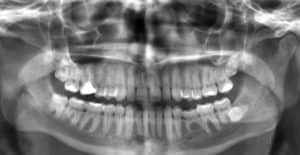Greetings, everybody! Whenever we pay a visit to the dentist, sometimes we have to get ourselves a little X-ray. Why is that? What are they for? Should I be worried? How many types are there? This and many more questions will be answered thanks to the aid of Los Algodones dentists.
What are X-rays and what are they used for?
X-rays are a very important part in diagnosing and preventing issues in all of the medical fields. In dentistry, it helps greatly seeing the position of the teeth, both adult and baby teeth alike.
To explain a little bit more what they are, they are a type of energy that goes through soft tissue with ease. When it hits more dense tissue, it gets absorbed, which is why in radiographs we see the bones on a lighter light. This is the result of dense tissue absorbing the X-rays, which is useful for teeth and jaw bones.
Importance and benefits of X-rays
Thanks to the x-rays, it makes easier the job of finding what we cannot look with the naked eye. There are elements that such as bone structure, tooth roots, and cavities that are not as easy to locate with the tools available.
- They help find and locate cavities within the teeth.
- Makes it easier for the dentist to look where the tooth roots are.
- Being able to check how teeth are developing.
- Making sure there is enough bone structure to support procedures such as All-on-4.
- Ultimately ensures the health of the patient’s teeth through close examination.
Different types for different purposes
When talking about types, they are divided into two: intraoral and extraoral:
Intraoral X-rays
Intraoral x-rays are the most common ones performed. As the name implies, their scope is inside the oral cavity so their target are teeth and their roots. Now there are different angles they can be:
- Bite-wing X-ray. This one is for having a clear look at the back morals. The name is given due how it is performed: the patient has to bite down a device with the shape of a wing at the moment of taking the X-ray.
- Periapical X-ray. A periapical one, on the other hand, gives a clear picture of one to two teeth. This includes surrounding bone and root, so it is not just the tooth.
- Occlusal X-ray. Then we have occlusal which is mostly used for children. These show a full set of teeth of either the upper or lower jaw in order to track tooth development.
Extraoral X-rays
Extraoral x-rays help assessing the whole situation with jaw and skull included. They help at having a big picture of how one thing might be affecting the other, such as in a crossbite, for example. But for finding dental-related problems such as cavities they tend to be lacking.
Are they safe to use?
You surely must have heard how x-rays can be bad for your health. Although that is true, it is only when it is done perpetually and non-stop.
Nowadays, there are better and more efficient technologies to achieve a radiograph. Throughout the years the doses have been lowered while the film has been sped up to allow a better image while maintaining exposure to a minimum.
If you are interested in getting cheap dental procedures with a friendly staff, make sure to contact us! We have the best dentists in Los Algodones to offer you a great service, you are free to ask any question and we will clear all of your doubts.
